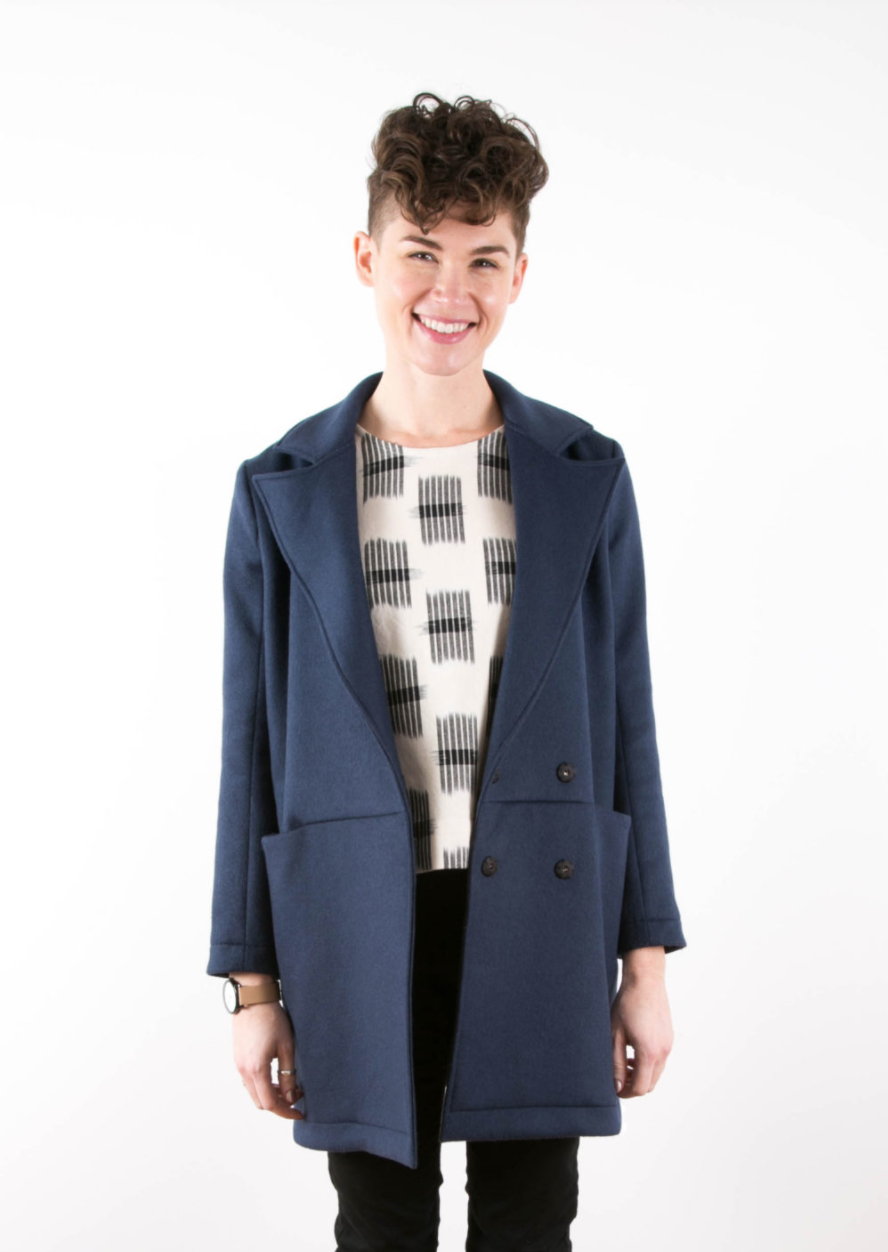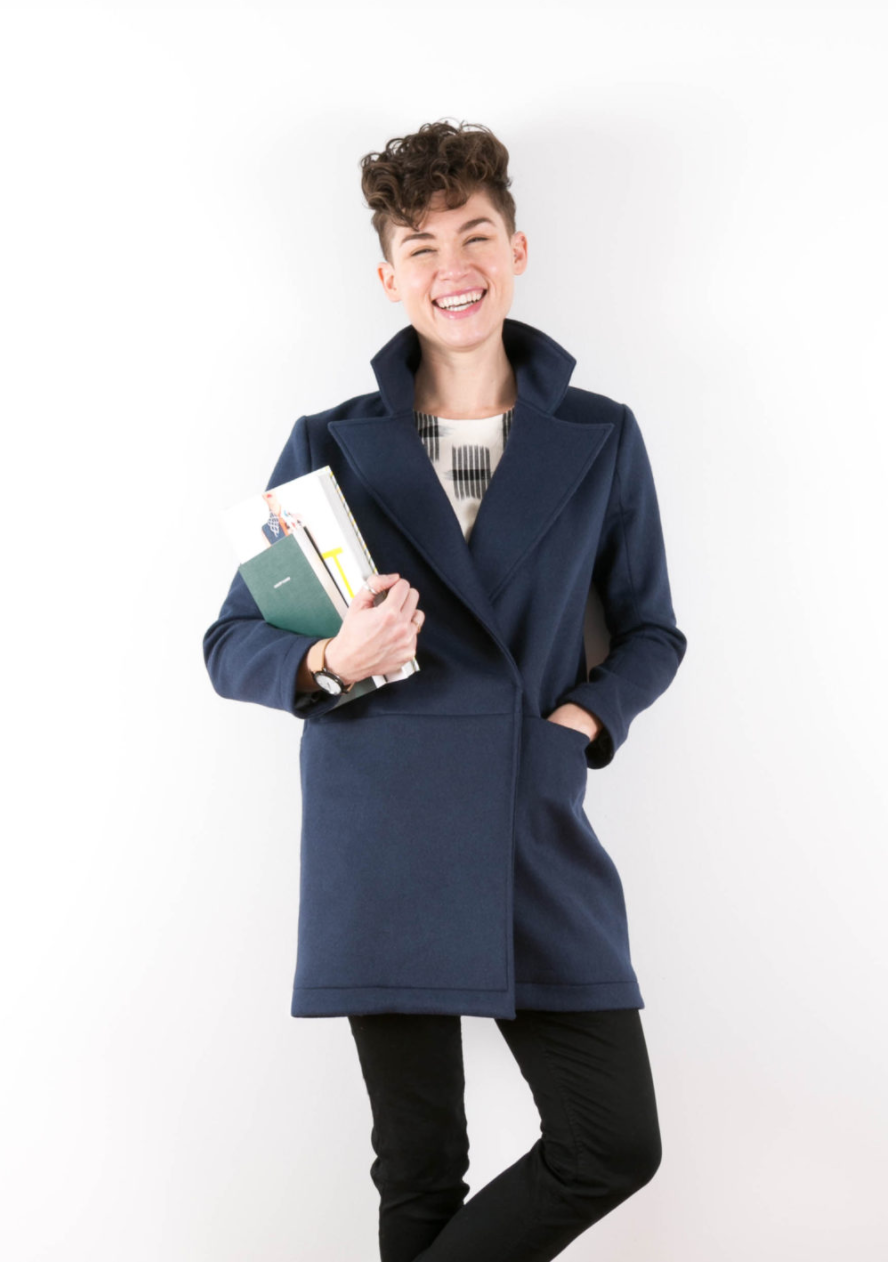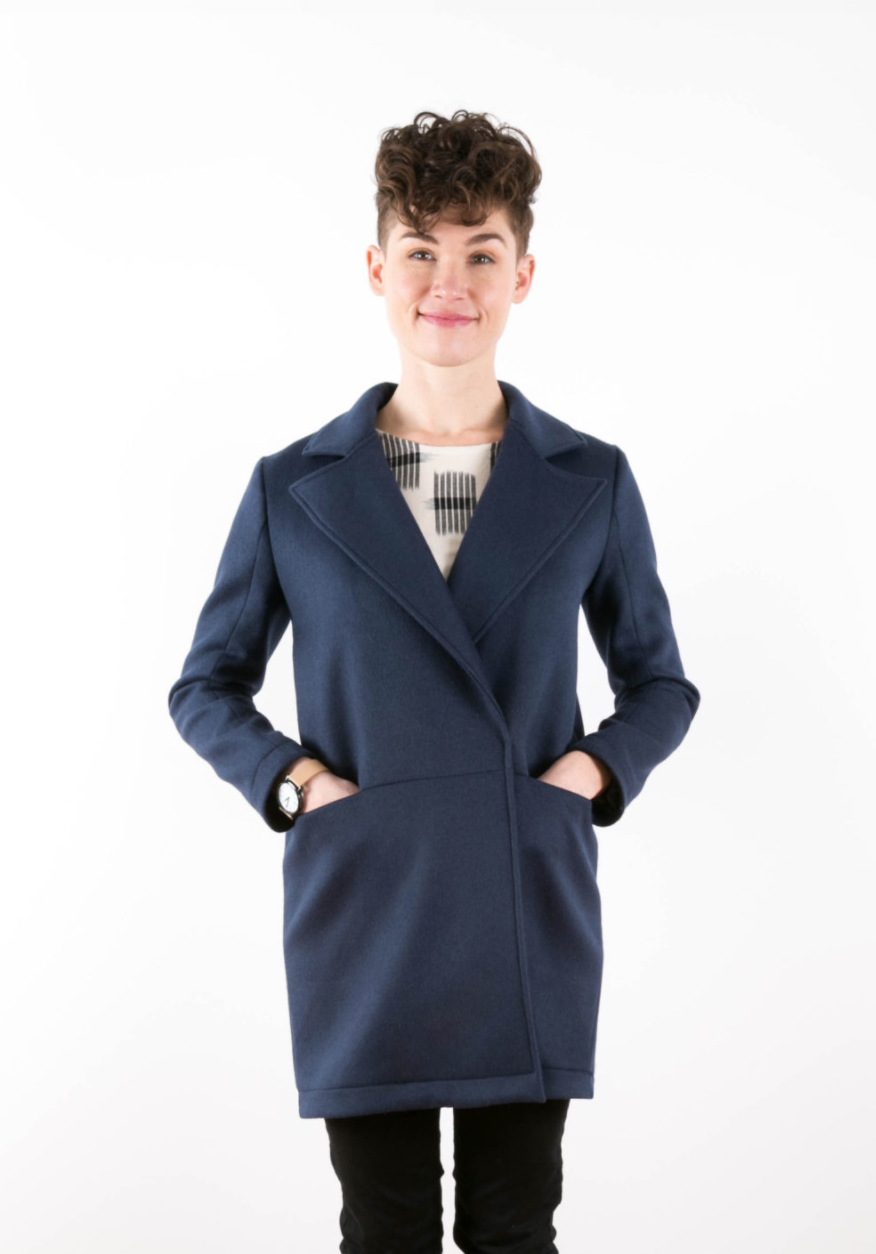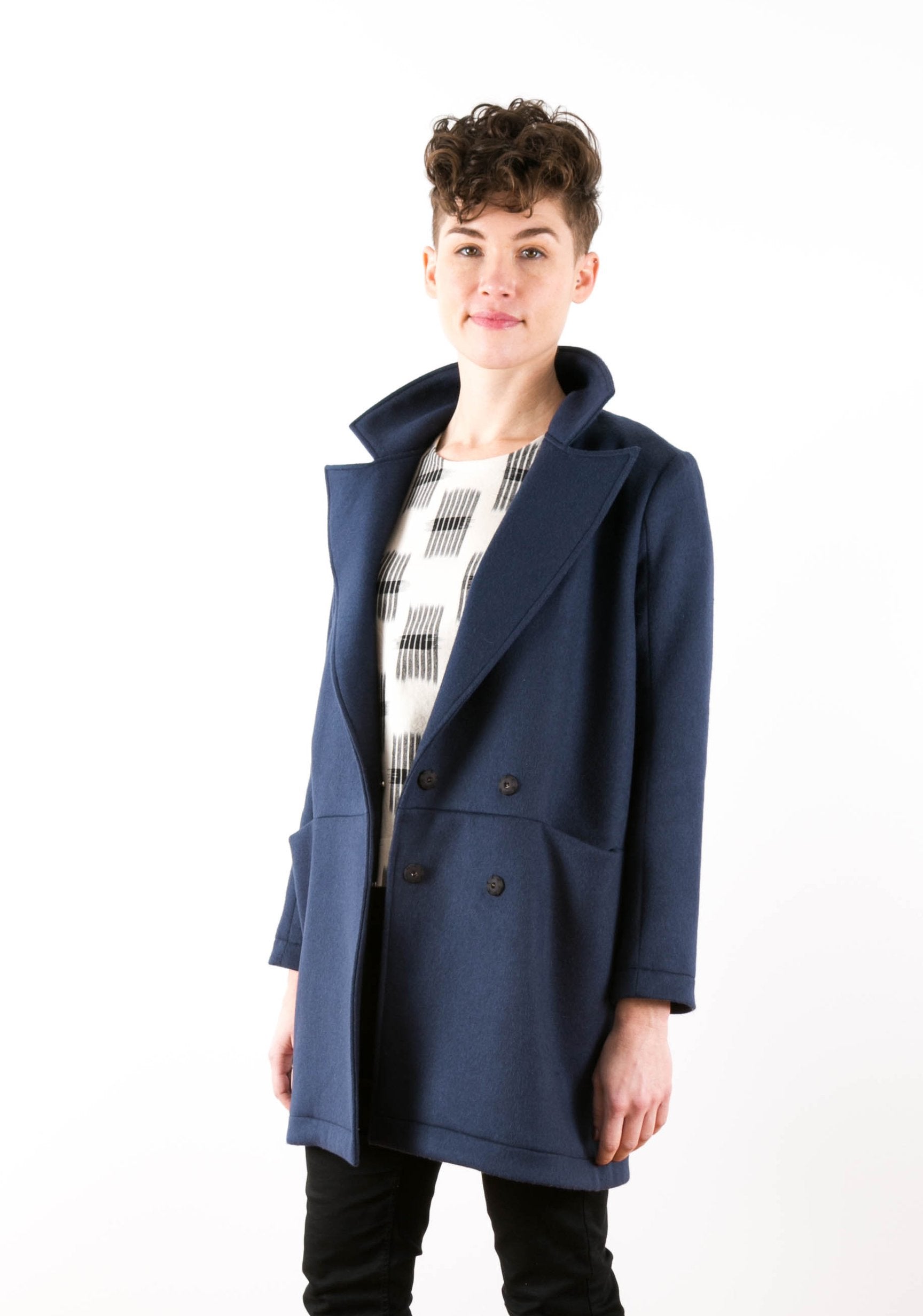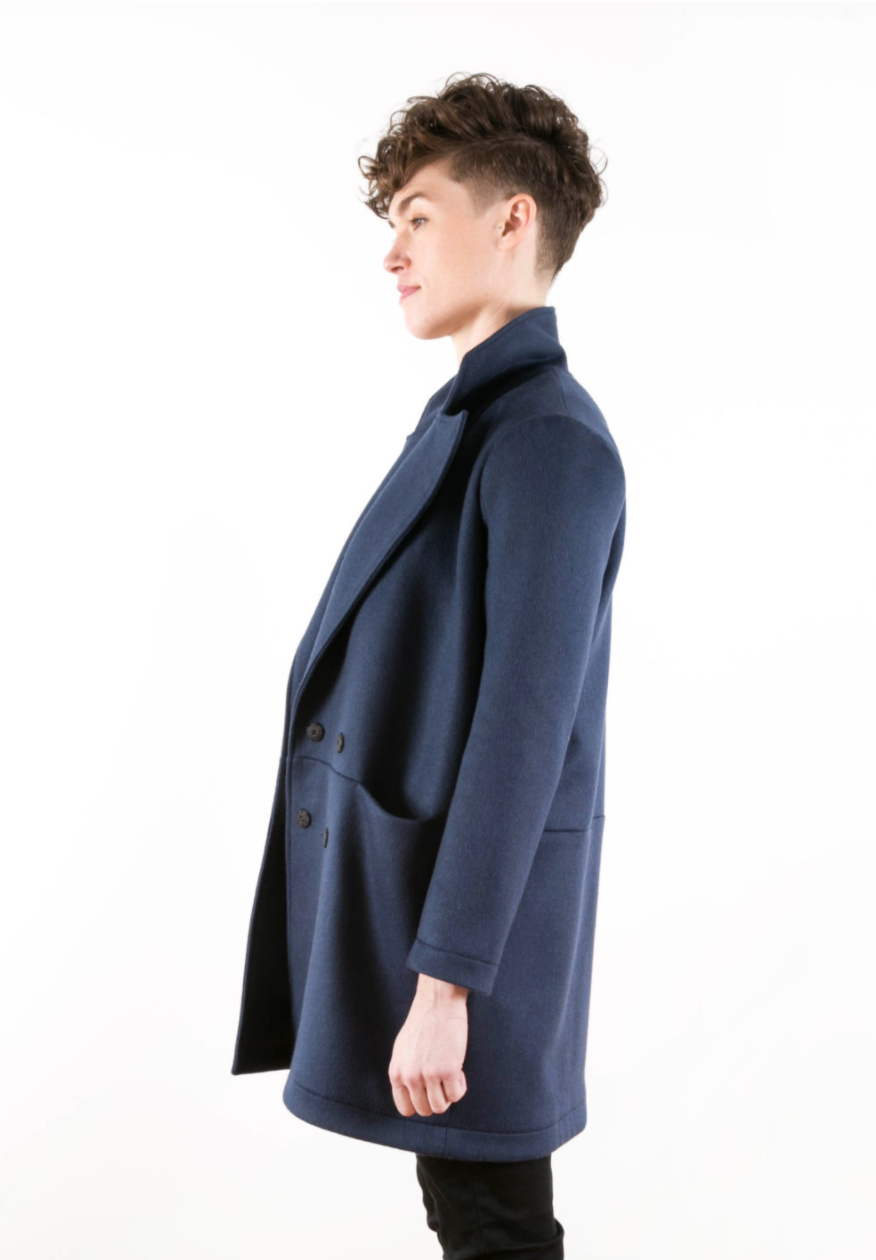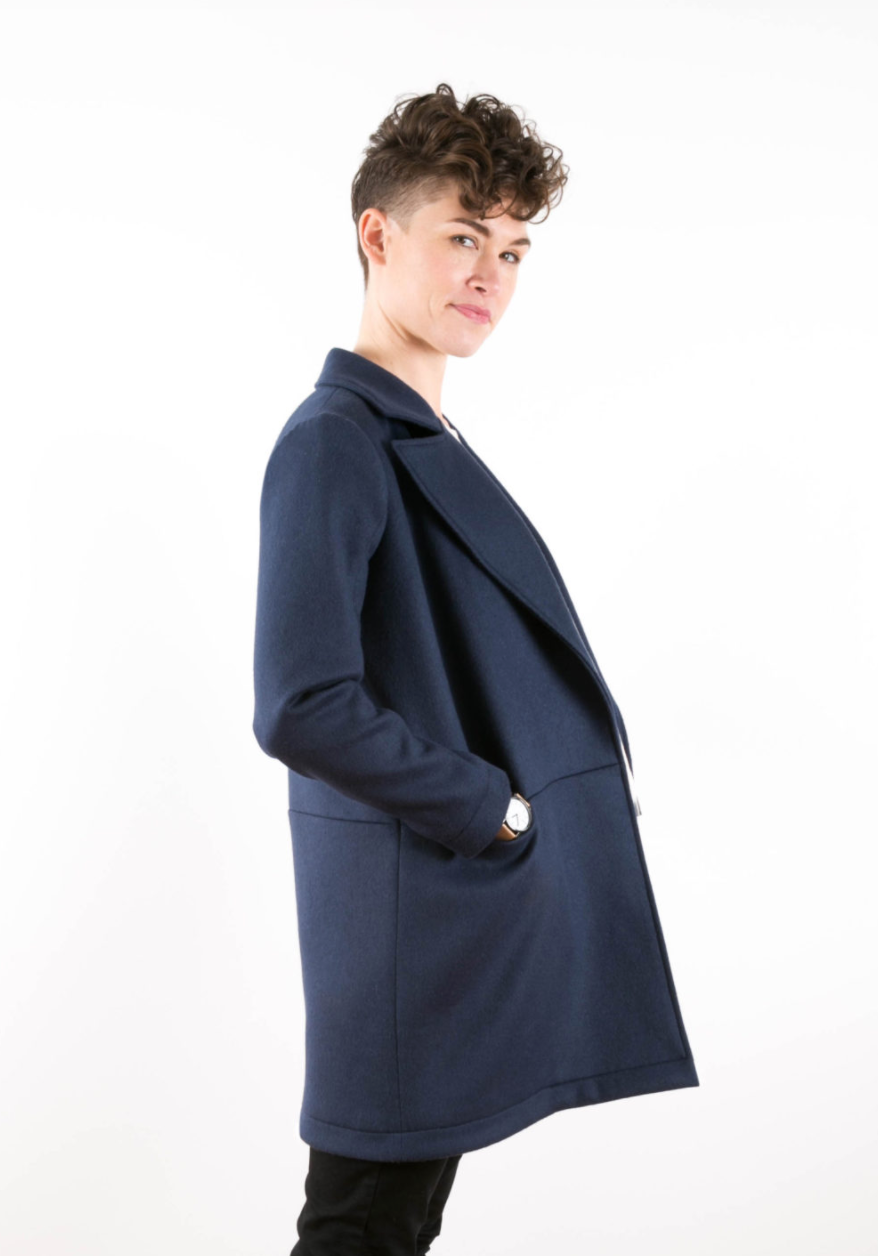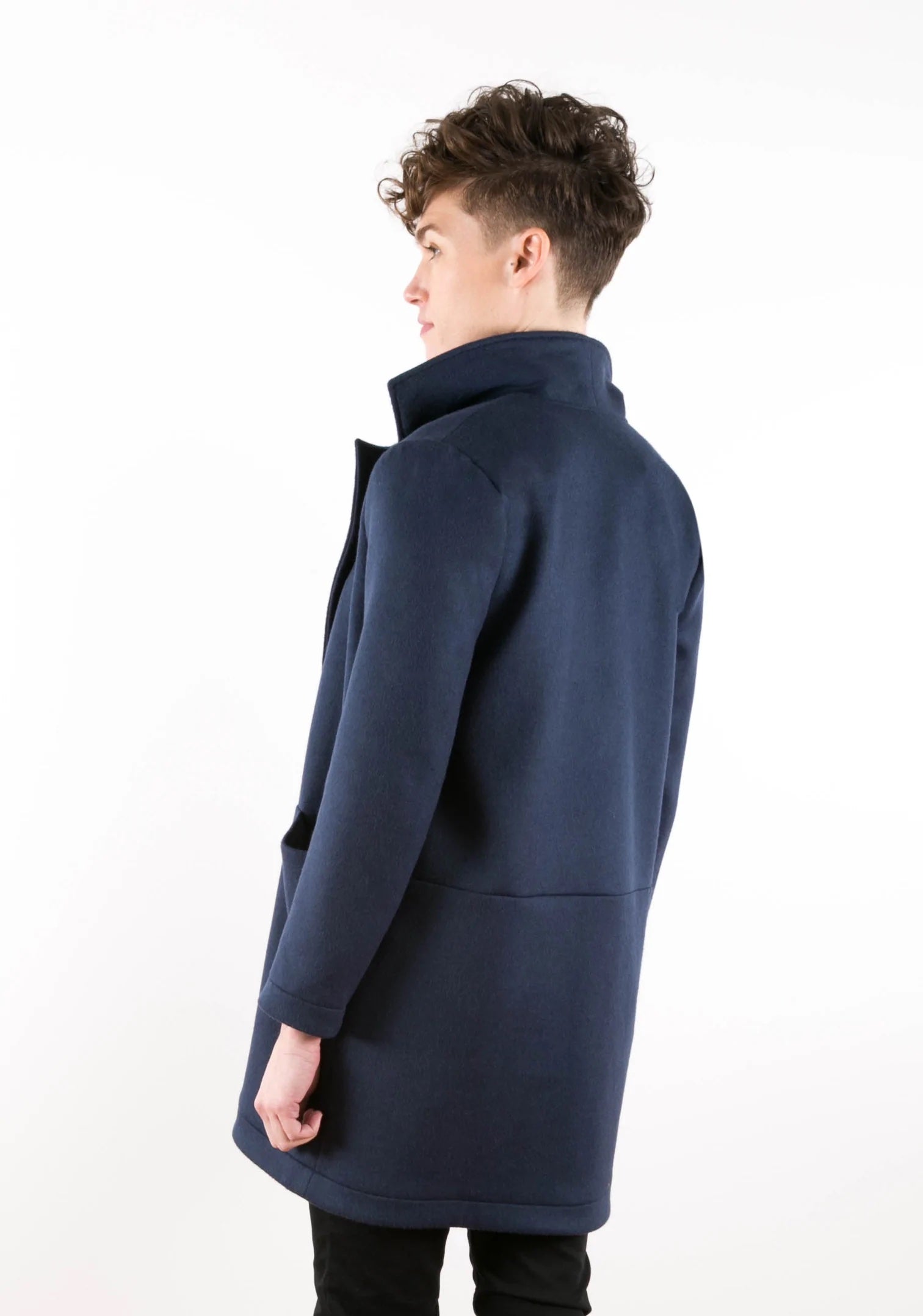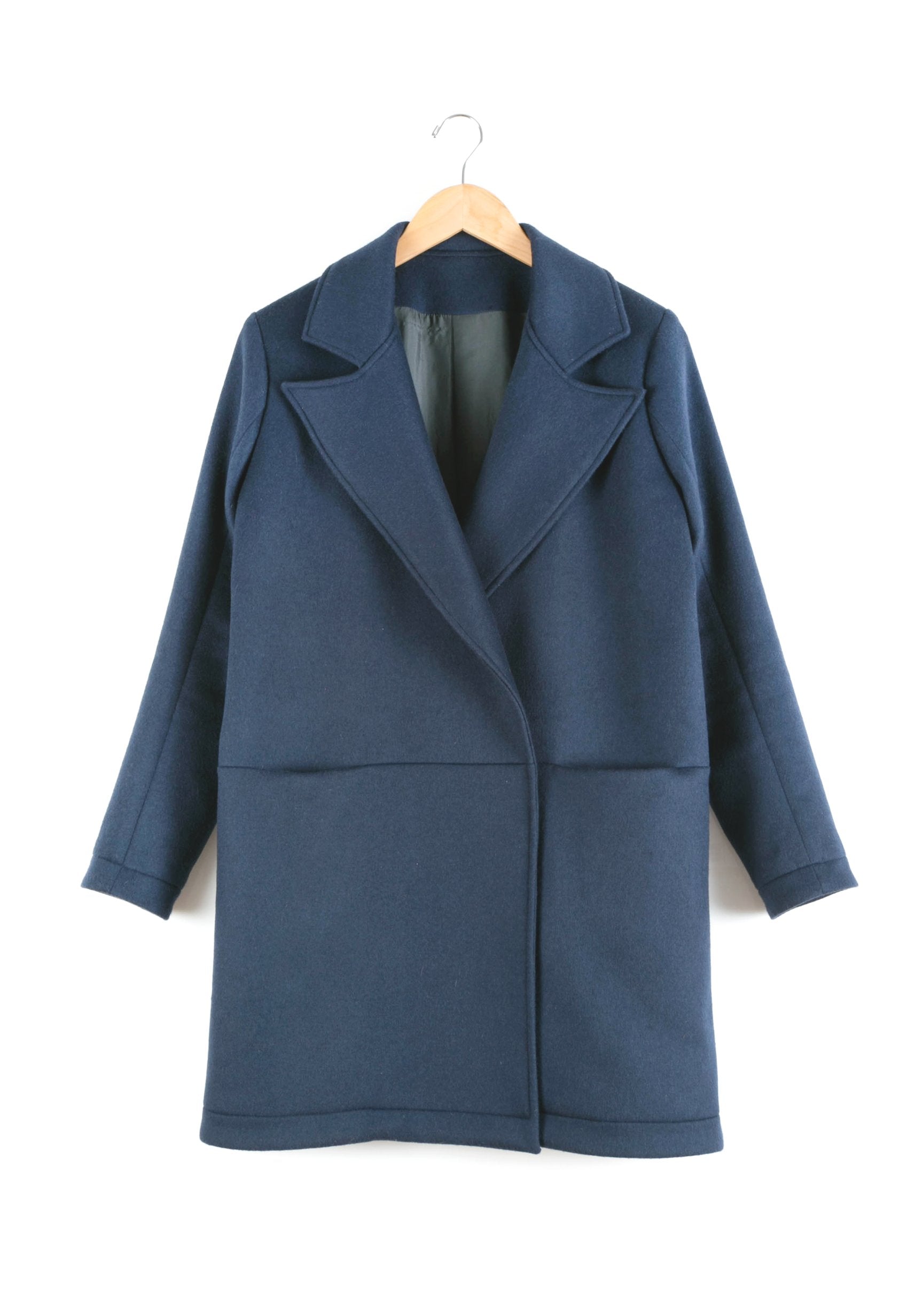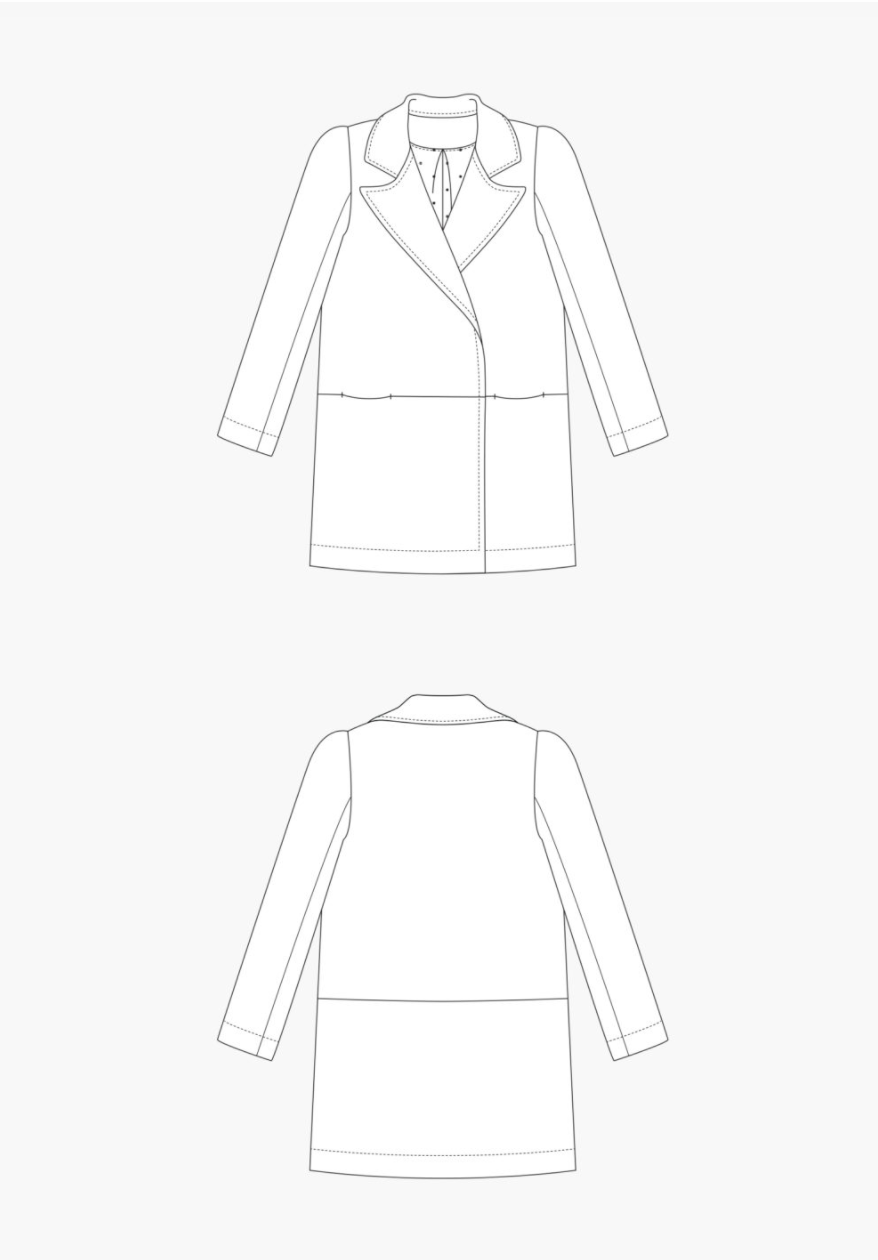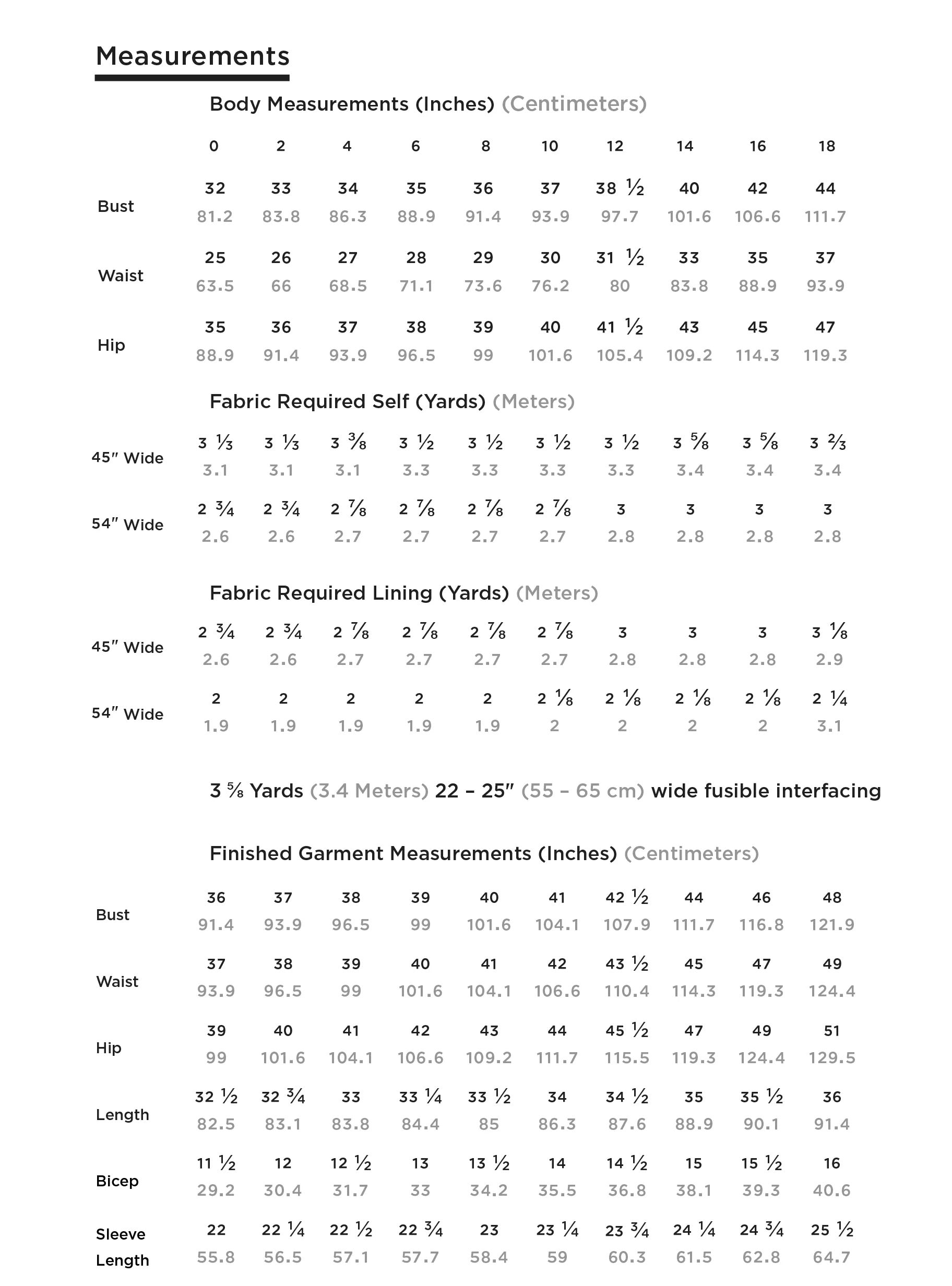Grainline Studio Yates Coat
Buy the Yates Coat sewing pattern from Grainline Studio. The chic style of the Yates Coat will instantly upgrade any cool weather outfit. In-seam pockets and a hidden double breasted snap closure keep the silhouette sleek, while the slightly oversized lapel and mid-thigh length give the Yates a modern aesthetic. A full lining and two-piece sleeves ensure you’ll be wearing your Yates for years to come.
This sewing pattern is available to buy in the following format:
- PAPER (next working day dispatch on orders and FREE UK delivery over £50)
What we think: We love the simple shape and cut of this pattern, and the in-seam pockets are a great feature. It would look fantastic colour blocked too.
Suggested fabrics: Medium to heavy weight coating fabrics such as melton, boiled, or felted wool. Recommended lining is rayon bemberg or a similar fabric.
Fabric requirements: Extra fabric may be needed to match plaids, stripes, or one-way print designs.
Coat: 45" (114 cm) wide fabric: 3 1/3 - 3 2/3 yd (3.1 - 3.4 m) // 54" (137 cm) wide fabric: 2 3/4 - 3 yd (2.6 - 2.8 m).
Lining: 45" (114 cm) wide fabric: 2 3/4 - 3 1/8 yd (2.6 - 2.9 m) // 54" (137 cm) wide fabric: 2 - 2 1/4 yd (1.9 - 2.1 m).
Sizing: US 0 - 18 (approx. UK 8 - 18). Please check the size chart and finished garment measurements.
Notions: Thread; fusible interfacing; four 3/4" snaps.
If you're looking for more maker inspiration, check out the latest sewing pattern reviews from the sewing community. We also have a sewing blog to keep you up to date with all the news from the world of sewing.
If you’re looking for maker inspiration check out our blog. With weekly updates on new patterns, styling ideas and maker inspiration, it's not to be missed.
Cart
Your cart is empty
Spend another £50.00 and get free shipping!


